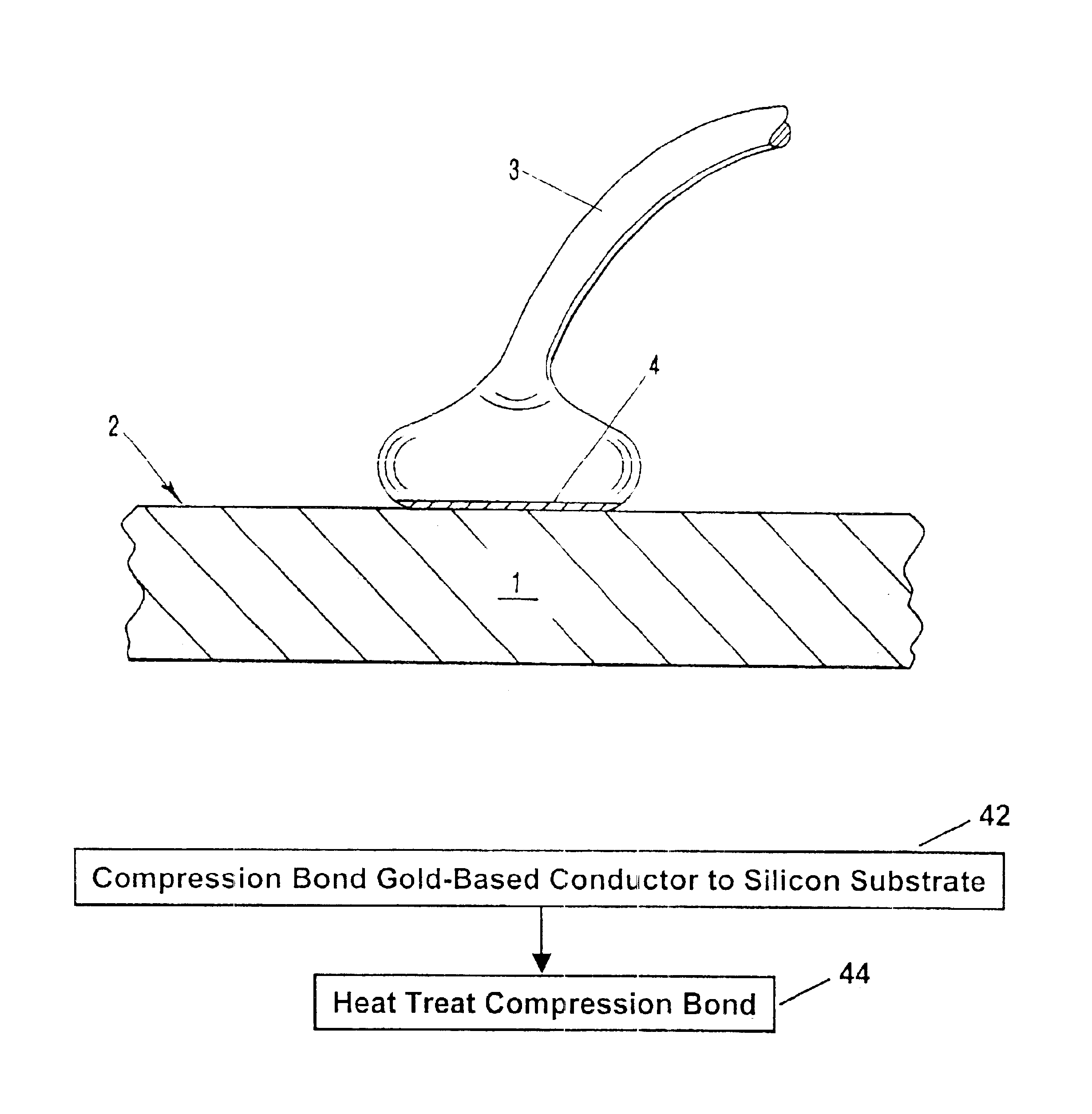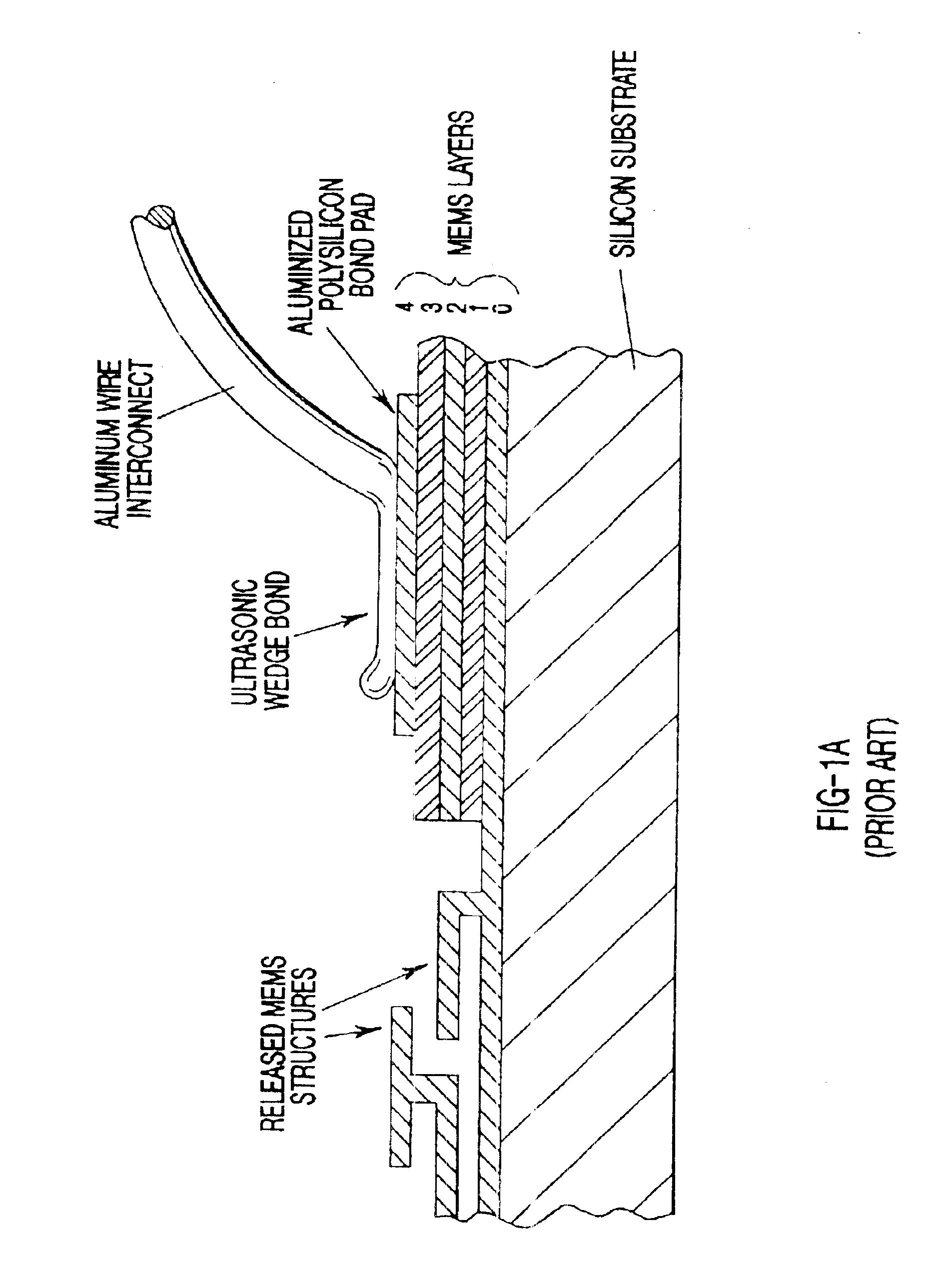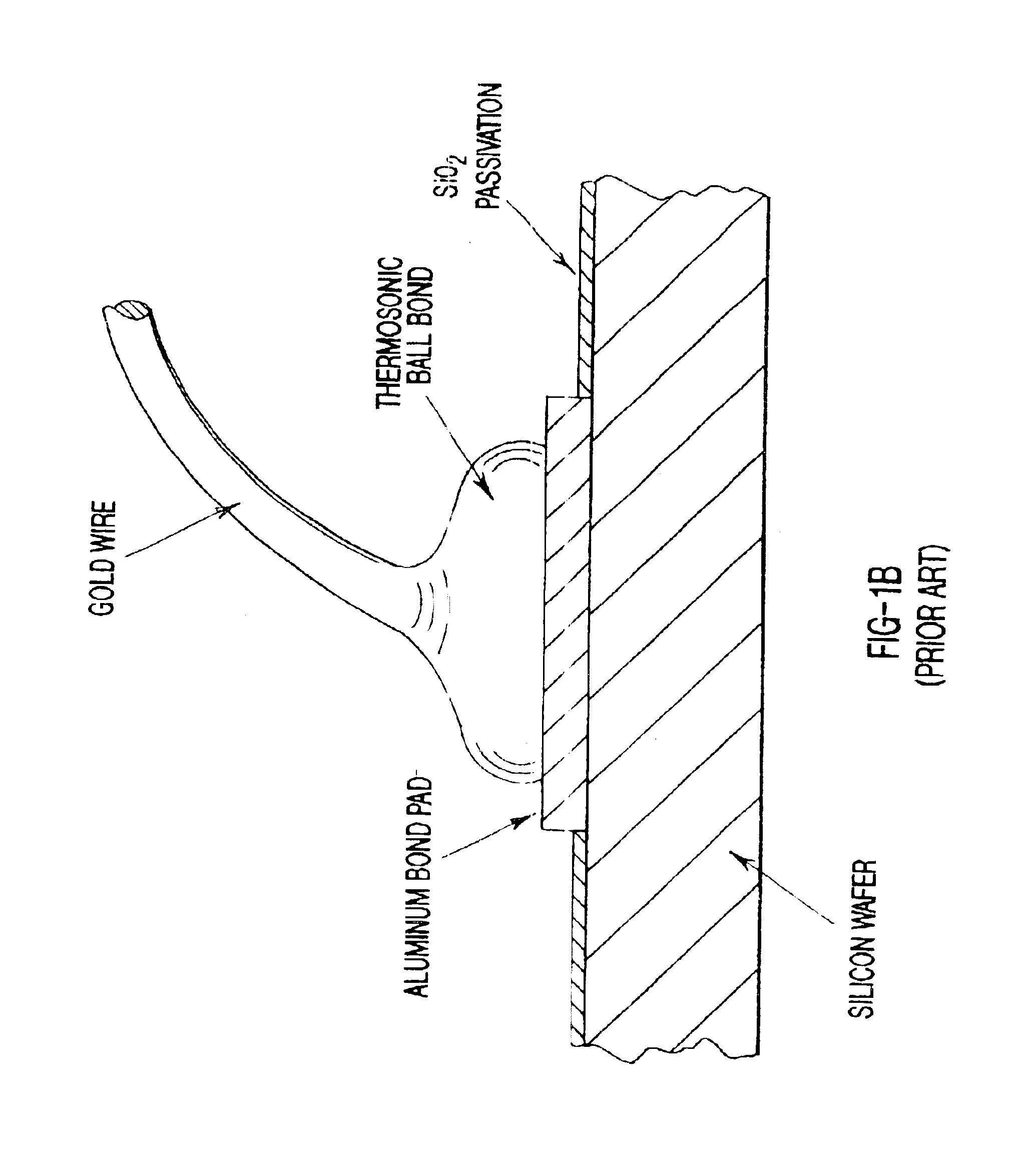Release resistant electrical interconnections for MEMS devices
a technology of release resistance and electrical interconnection, which is applied in the direction of microstructural devices, fluid speed measurement, instruments, etc., can solve the problems of unprotected and damaged electrical interconnection, potential risks to the delicate released mems structure, shock, thermal effects, etc., to improve the bond strength, enhance the initial bond, and enhance the bond strength
- Summary
- Abstract
- Description
- Claims
- Application Information
AI Technical Summary
Benefits of technology
Problems solved by technology
Method used
Image
Examples
Embodiment Construction
The present invention relates generally to the process of making electrical interconnections to microelectronic devices, including IC's, MEMS, IMEMS, and MOEMS devices. The process, however, has wider applicability, namely, for bonding a gold-based wire or other electrical conductor made substantially of gold (or coated with gold) to a silicon (or germanium) substrate using compression bonding to selectively “activate” the mating surfaces.
The word “silicon” as it relates to a “silicon substrate”, “silicon die”, “silicon wafer”, and “polysilicon bonding pad” is broadly defined to include: (1) single-crystal silicon (as in a large-diameter silicon wafer), (2) polycrystalline silicon (as in thin polysilicon layers used for MEMS structures and for gates on microelectronic devices), (3) silicon on bulk micromachined MEMS devices, (4) doped silicon (n-type, p-type, phosphorus-doped, boron-doped, lightly-doped, heavily-doped, etc.), where doping is used to increase electrical conductivity,...
PUM
 Login to View More
Login to View More Abstract
Description
Claims
Application Information
 Login to View More
Login to View More - R&D
- Intellectual Property
- Life Sciences
- Materials
- Tech Scout
- Unparalleled Data Quality
- Higher Quality Content
- 60% Fewer Hallucinations
Browse by: Latest US Patents, China's latest patents, Technical Efficacy Thesaurus, Application Domain, Technology Topic, Popular Technical Reports.
© 2025 PatSnap. All rights reserved.Legal|Privacy policy|Modern Slavery Act Transparency Statement|Sitemap|About US| Contact US: help@patsnap.com



